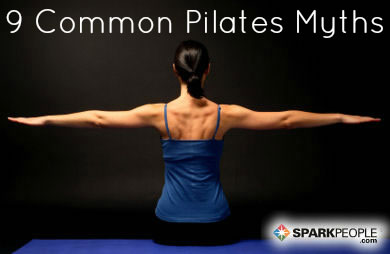|
Eggs—almost everyone loves them, and for good reason: They're a perfect protein that you can add to nearly any dish. Plus, since eggs are so adaptable, there's an almost infinite number of ways to cook them. Chances are, you probably have a favorite, go-to style of cooking your own eggs. You've probably even perfected your technique over time and have no plans of changing how you do things. You might have even gone so far as to convince yourself that your egg recipe is the perfect recipe, and no other methods even matter. Here's a truth bomb, though: There isn't just one best way to cook eggs. In fact, there several ways to cook eggs, each of which can be used to help you avoid meal boredom and expand your culinary horizons. To that end, we've put together a list of what we consider the nine best ways to cook an egg. Some cooking styles you’ll be familiar with (Who doesn’t like a good scrambled egg?), while other techniques might be new to you. Who knows? You might even find a new favorite. Are you egg-cited? Let's get going! Hard-Boiled Eggs: How to Cook the Perfect Portable Breakfast.png) We all know how to cook a hard-boiled egg, but do you know the best way? The best way to start is to understand what you’re going for. A hard-boiled egg is an egg cooked in its shell in boiling water until the egg white (or albumen) and the yolk are both cooked solid. Seems easy enough, right? But there’s a ton of misinformation out there. The simplest way to the best hard-boiled eggs is the "heat and soak" approach: Cover the eggs with about an inch of water and then slowly bring the water to a boil over medium heat. Once boiling, remove the pot from the burner, cover it and let it sit for 12 minutes. Martha suggests 12 minutes, but I’m more of an eight-minute man myself; it depends on the consistency for which you are looking. Then, remove the eggs from the stovetop and run under cold water. For easier peeling, remove the eggs from the hot water with a slotted spoon and place them in an ice water bath for a few minutes. The quick switch from hot to cold water causes the egg to pull away from the shell, making the shells easier to remove. Many enjoy eating hard-boiled eggs with either a sprinkle of kosher salt or a splash of hot sauce, but some people like to add a few veggies and turn them into little chicks! Soft Boiled: A Slightly Shorter Cooking Time, but an Amazing Difference in Taste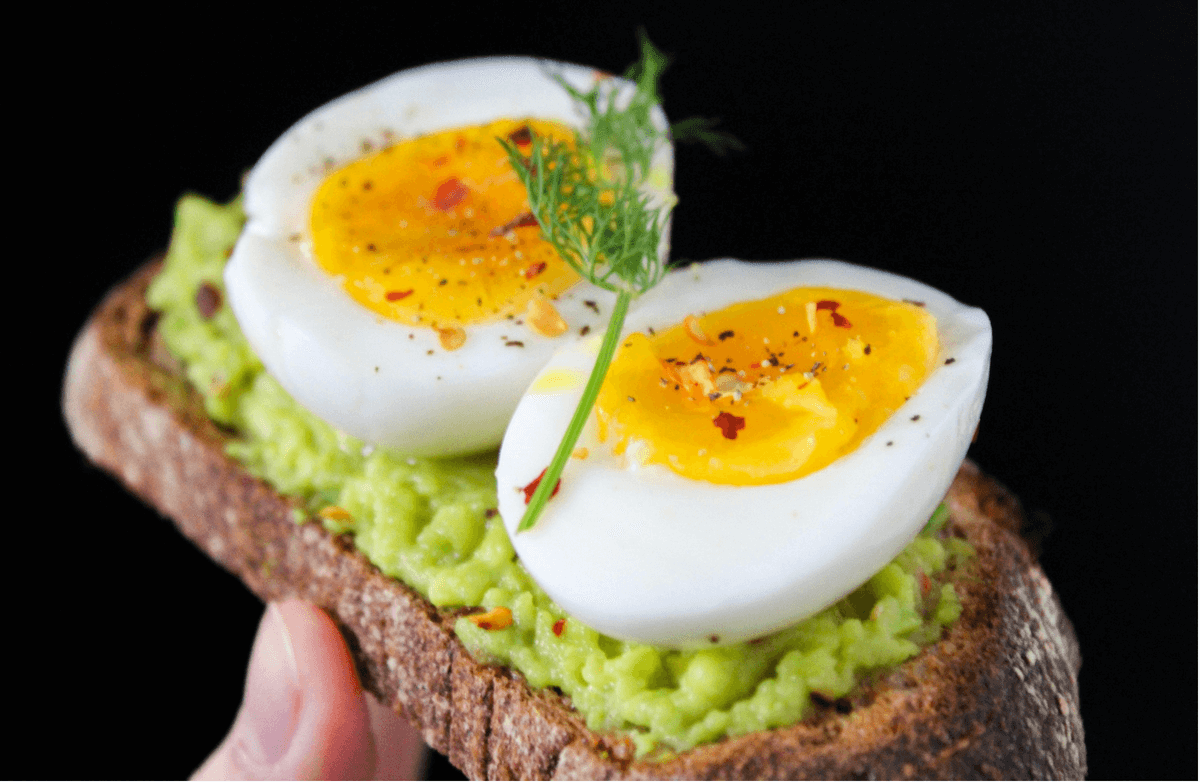 Soft-boiled eggs are like hard-boiled eggs but cooked in roughly half the time. The goal here is to cook the egg white completely while leaving the yolk runny. To make the perfect soft-boiled egg, add the same amount of water to a pot as with hard-boiled eggs, bring the water to a boil and then lower the temperature to a strong simmer. Gently place your eggs in the pot and then start your timer. For one or two eggs, expect to leave them in for around five minutes for a runny yolk and up to around seven minutes for a more firmly set yolk. Once the eggs are to your desired doneness, remove them from the pot with a slotted spoon and place them in an ice bath to halt further cooking. Hard Scrambled: Learn How to Cook Your Eggs Like a Short-Order Cook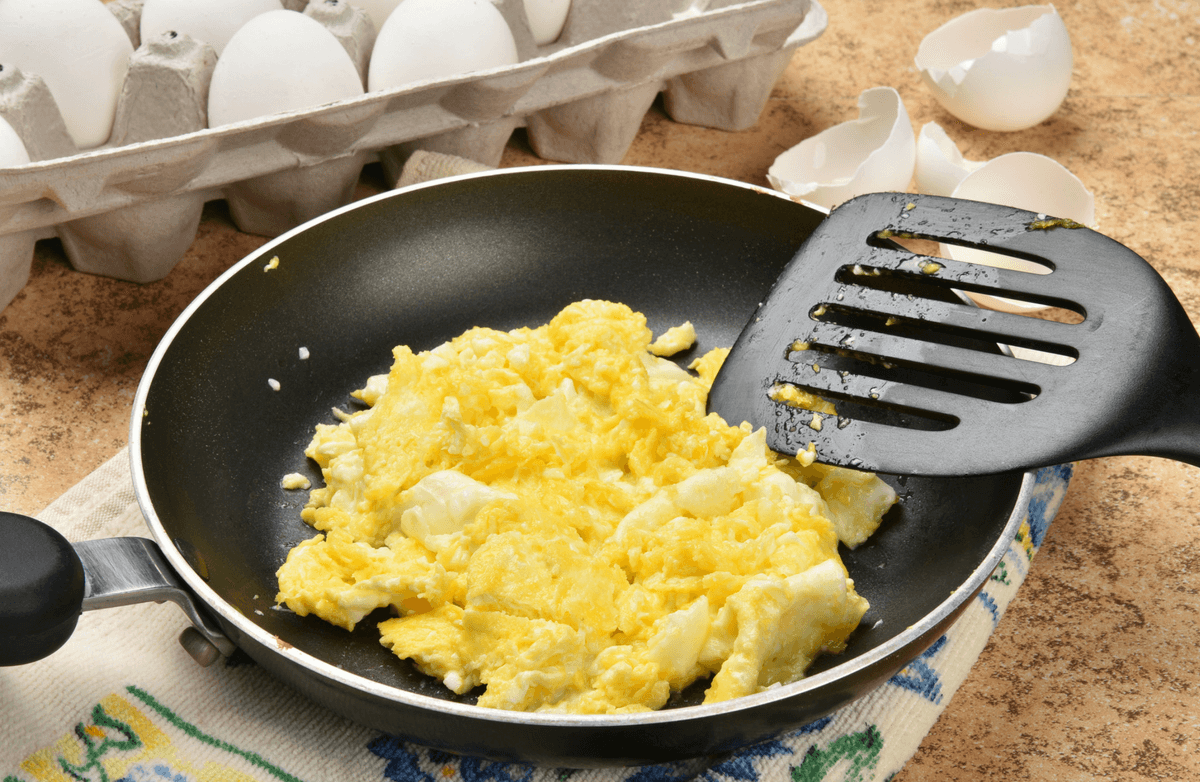 Hard scrambled eggs will seem familiar to anyone who’s spent time in a diner. It's the easiest way to scramble an egg and is a great first step into scrambling if you're new to the style. But just because hard scrambling is easy doesn't mean you can ignore the heat! Keep an eye on the temperature and note how often you stir the curds of egg and you'll have a delicious dish in no time at all! To make a hard scrambled egg, use a non-stick pan. Heat it for a few minutes over medium-high heat, add butter and heat until bubbly. Don't let the butter brown. Then, crack a few eggs into a bowl, add salt and pepper to taste and stir with a whisk or beat vigorously with a fork. Pour the eggs into the pan and keep them moving with a spatula. Every minute or so, fold your eggs to break up any large curds and scrape the bottom of your pan back and forth. Cook the eggs until there is no liquid left in the pan, about four to seven minutes. Take the pan off the heat and transfer the eggs to a plate; leaving eggs in the pan can make them rubbery. There's no secret as to how you can eat these eggs, you just eat them. Maybe add some toast and jam, or some home fries on the side. Or goetta, if you’re adventurous. Soft Scrambled: Scramble Your Eggs Like the French Do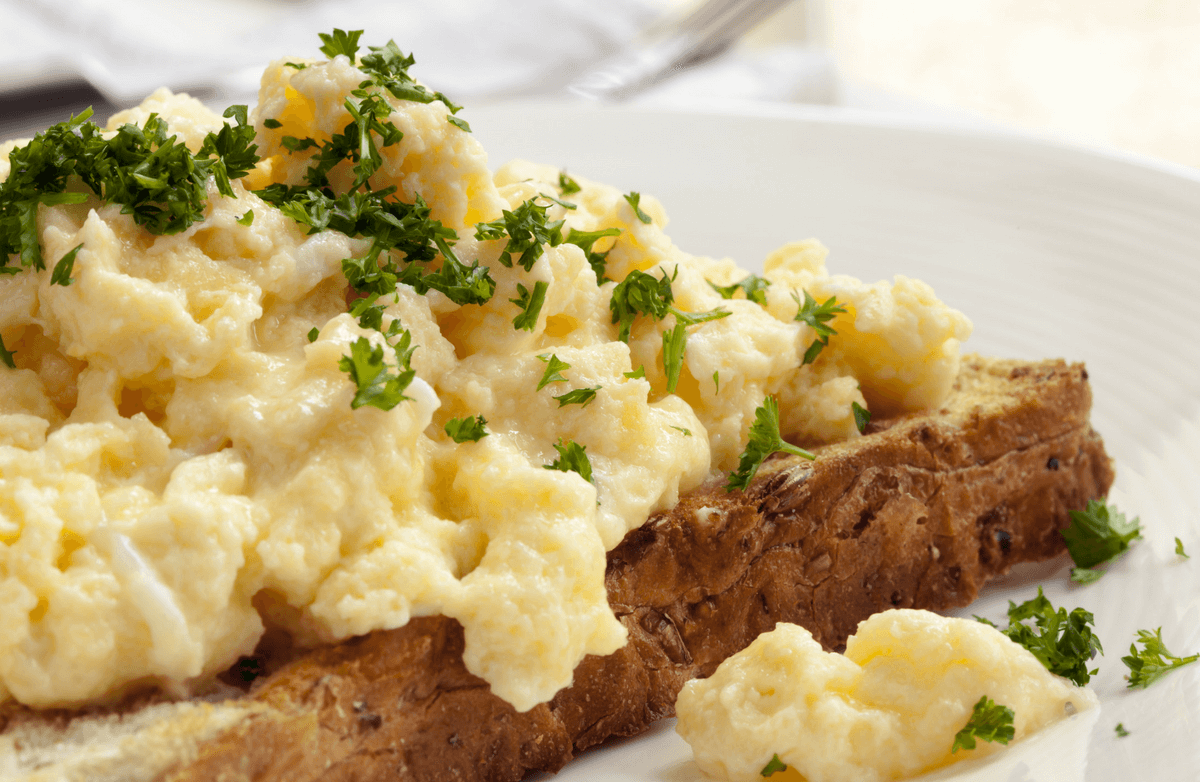 Soft scrambled eggs are the creamier, meltier sibling of hard scrambled eggs. They take a little longer to make and quite a bit more patience, but the velvety, soft mound of eggs you'll end up with is totally worth the extra attention. While keeping an eye on the heat is key to mastering hard scrambled eggs, it's even more important if you want to lock in perfect soft scrambled eggs. For this how-to, start with four cracked eggs, a nonstick pan, a spatula, about a tablespoon of butter, salt and pepper. Melt your butter in a nonstick skillet over medium-low heat. Make sure the butter coats the whole pan. Whisk the eggs vigorously in a separate bowl. With the butter just barely bubbling, gently pour the eggs into the center of the pan so that the butter gets pushed out toward the sides. As the edge of your eggs barely starts setting, lightly scoop your spatula around the edges of the pan to create soft, big curds. Don’t flip the curds; we're just trying to help them set. Push the eggs around the pan consistently, but pause now and then to allow the eggs to cook a bit between scoops. Work quickly but calmly—we don't want to overcook the eggs. Your eggs should set into a soft scramble in two to three minutes. If the eggs seem to be cooking too quickly, lower your heat. When the eggs are just barely set, remove them from the heat. We like them on a breakfast sandwich or by themselves. If you’re feeling fancy, try broiled asparagus on the side and feel like royalty! Over Easy, Over Medium, Over Hard and Sunny Side Up: What's the Difference?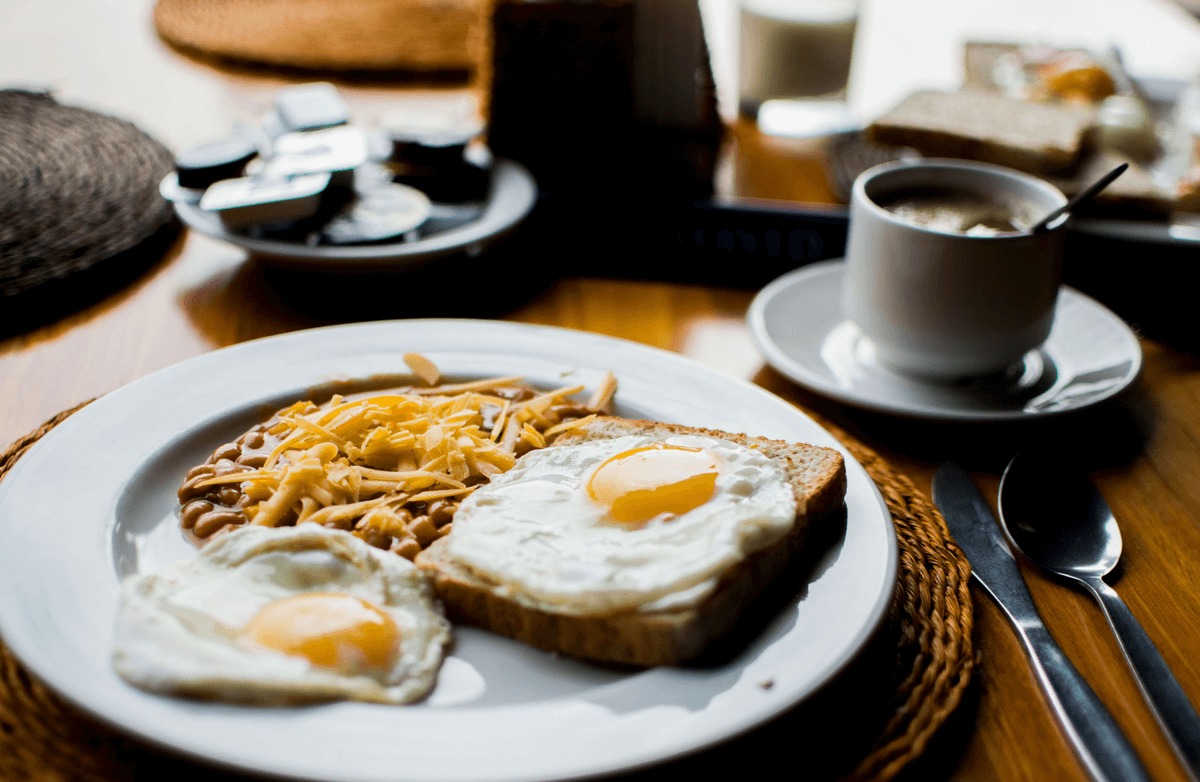 If you're a denizen of diners, you know the most important breakfast question is, "How you want your eggs?" The most common answers are either the hard scramble or one of the four other options below. We all have our preferences, but do you really know the difference between the sunny side up and the over easy? Maybe you've been ordering the wrong one all along!
Baked Eggs: In Shell or Not?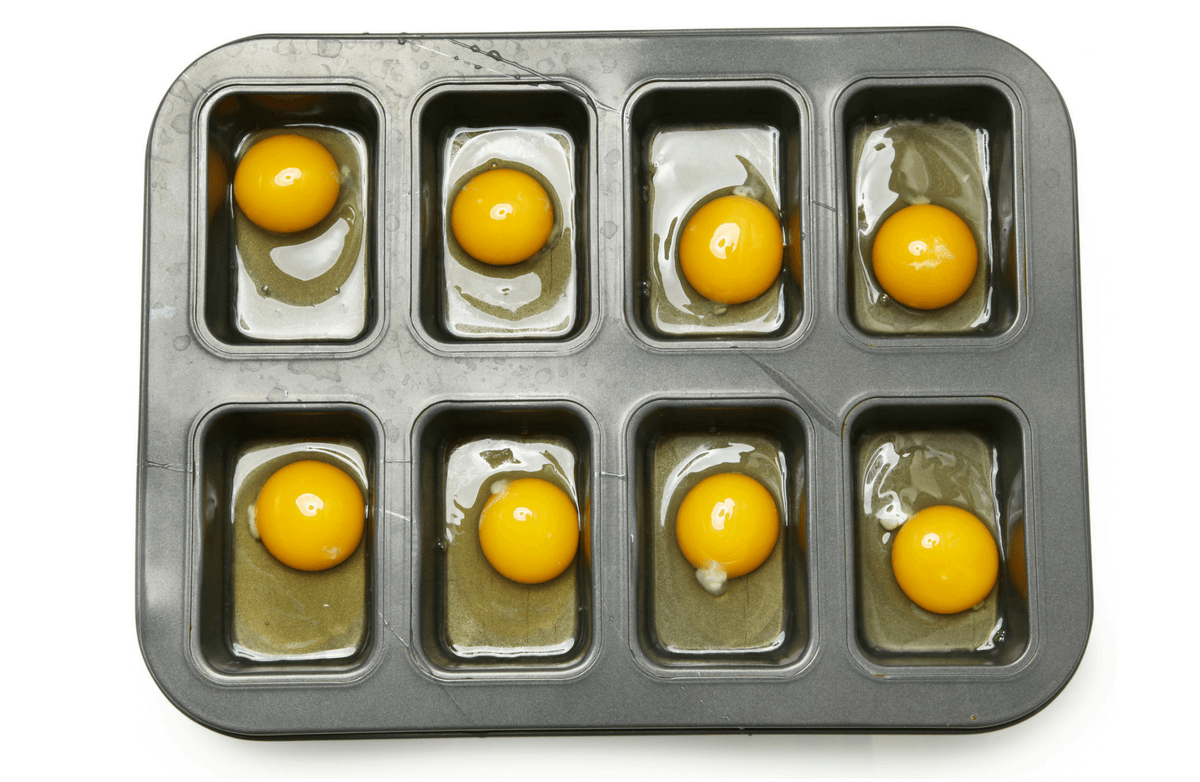 I remember when baked eggs were all the rage a few years ago, around Easter. I had just had my first kid and wanted to make a rainbow of eggs, so I found this recipe by Alton Brown. I was eager and made more eggs than we could possibly eat. I set my oven temperature at 320 degrees Fahrenheit, baked the eggs in a muffin pan for 30 minutes, and then moved the eggs to an ice bath to chill. They came out just perfectly, and now I bake my eggs every Easter, though I use fewer eggs now. But before I learned about baking eggs in their shell, I had thought that the only way you could bake eggs in a muffin pan was by greasing the pan, cracking an egg into each section and sprinkling a little cheese on top. There are a ton of great recipes for this dish like this one and this one, but generally, you can expect to set your oven to 350 degrees Fahrenheit, oil every section of your pan, add your egg and bake them for around 10 to 15 minutes. The process is super easy, and it's a great way to meal plan your breakfast for days! Basted Eggs: Not as Hard As You Think, More Delicious Than You Remember.png) Basting eggs sounds so fancy that you'll probably be surprised to learn that they're super easy to make at home! For those who have never come across this type of egg before, basted eggs are prepared by combining frying and steaming; when cooked properly they have a wonderfully nutty flavor. Like most of the options above, you’ll need a good nonstick pan heated over the medium heat setting to make basted eggs. While the pan is heating up, crack two eggs into a small bowl and put it to the side. Melt two tablespoons of butter in the pan until foamy, but not brown. Reduce the heat to medium-low and slide the eggs into the pan. Cook until the edges begin to turn white and then add a tablespoon of water to the pan. Cover the pan and cook the eggs for one and a half to two minutes. Lift the cover and peak at the eggs to see if they're at your preferred level of doneness. How to eat them? I like to slide them on top of a piece of toast covered with mashed avocado, but they hold up just fine on their own, too. If you want to try a tasty variation, check out this recipe on how to butter-baste eggs. Poached Eggs: They're Not Just for Ramen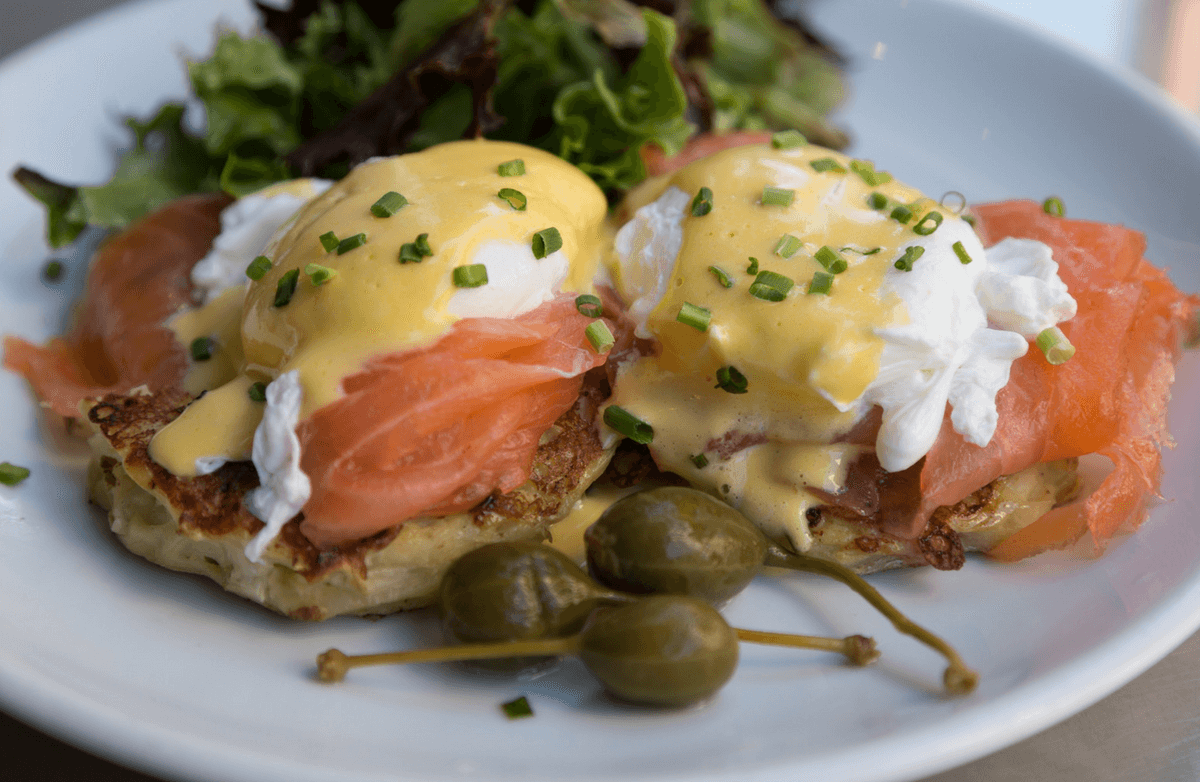 You might know this style of egg from the first time you saw it perched at the apex of a bowl of ramen, but for me, this is the type of egg my grandpa always ordered at diners. There's an old-timey elegance to poaching an egg—it's a style that takes a little practice to perfect, but it's so worth the end result. Set aside a little time, buy a carton of eggs and practice; the first few won't be pretty, but by the time you hit the end of the carton, you'll poach eggs like a culinary superhero. Poaching eggs takes patience and observation. First, crack your egg into a small bowl and set to the side. Very fresh eggs work best. Heat up an inch or two of water in a small pot until it reaches a low simmer. Add a teaspoon of salt and two teaspoons of white vinegar to the pot. Stir the simmering water in one direction until you have a smooth, whirlpool effect—the swirling water will keep the egg from spreading too much, and will result in a prettier poaching. If you are poaching more than one egg at a time, do not stir the water mixture first. Slide the egg into the center of the whirlpool, turn off the heat and cover the pot. Set your timer for five minutes and stare at the pot. You will feel the need to check on the egg to make sure it's properly poaching. Ignore this feeling and trust that the water, the egg, the vinegar and the salt are working their magic without your help. When your timer buzzes, remove the egg with a slotted spoon and serve immediately. You may have your favorite ramen recipe, but if not may we suggest this awesome how-to guide on how to make restaurant-quality ramen at home? It is just delicious and your ramen will be fabulous. Shirred: You Stuck Around for the Last One—Good On You!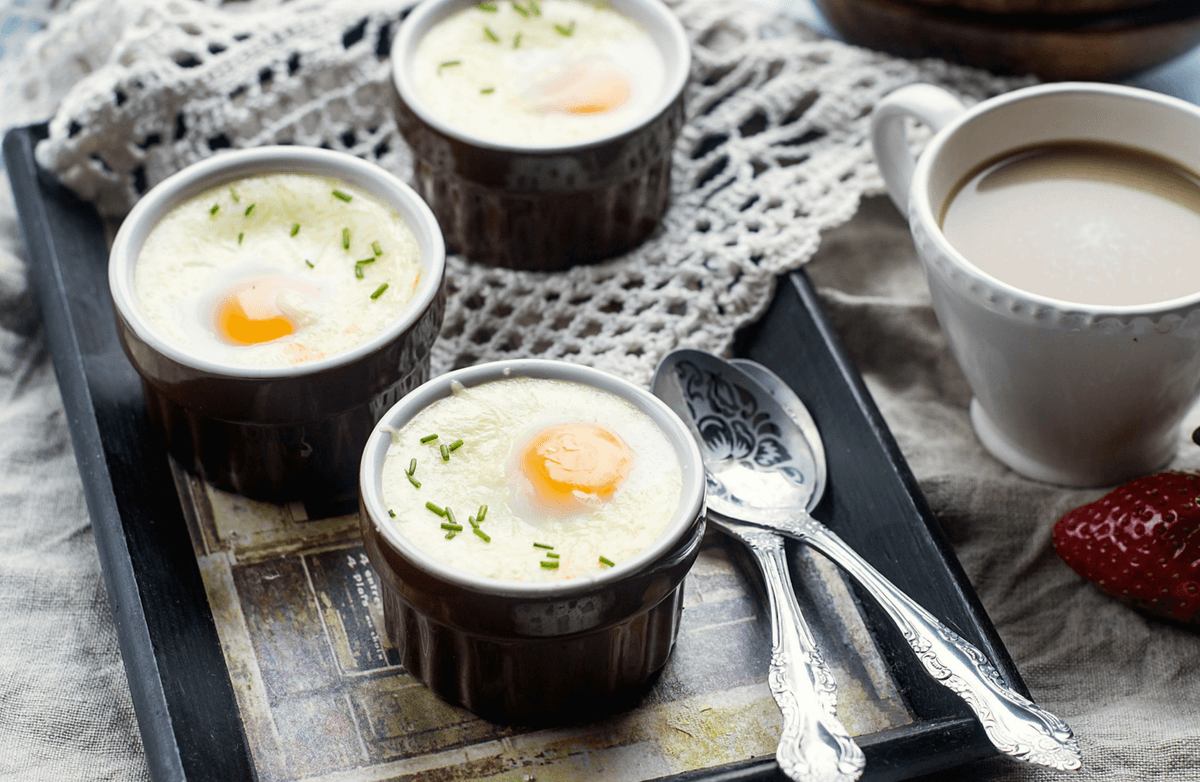 I've saved my favorite egg style for last. I didn't even know shirred eggs existed until about 10 years ago when my grandmother-in-law gave me little, floral dishes she picked up in England years before. She said they were for shirred eggs, but that she never got around to making them anymore, and she thought I might like them because I like to cook. She was more right than she could have imagined. They are now my favorite style of egg, and are pretty easy to boot! You don't need British egg pots to make the perfect shirred egg. You will need a ramekin or a small ceramic bowl though, as this is an egg technique that takes place outside of the shell. You'll also need a pot with enough water in it to reach almost all the way to the top of your ramekin, but not with so much water that a light simmer will send the water over the edge, into your ramekin. Butter your ramekin, crack an egg into the dish and add two to three tablespoons of cream. Grate in another two tablespoons of your favorite cheese and sprinkle in any egg-friendly herbs. Place your ramekin into its water bath and bring the temperature up to a slow simmer, then cook until the egg has reached your preferred stage of doneness. (Please make sure the whites are done at least.) This cooking style is incredibly versatile. The end result of a shirred egg with cheddar and chives is a totally different dish than a shirred egg made with gruyere and tarragon. This is the egg cooking technique you can daydream about, fleshing out different flavor combinations for the next morning's breakfast. The shirred egg is the egg that dreams are made of. Did we get to your favorite style of egg? If not, let us know in the comments and maybe we'll add it to the list! And if you’re looking for some of our favorite egg dishes, check out these three wonderful recipes: Scrambled Eggs with Beet Greens and Onions Low Carb Sausage and Egg Casserole |
Popular EntriesMore From SparkPeople
|







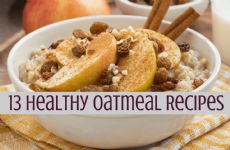
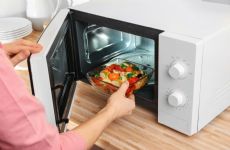








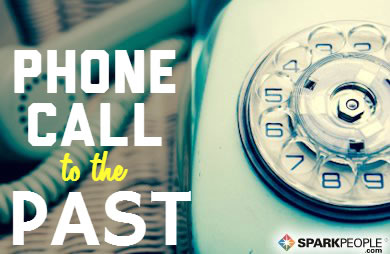
.png)

